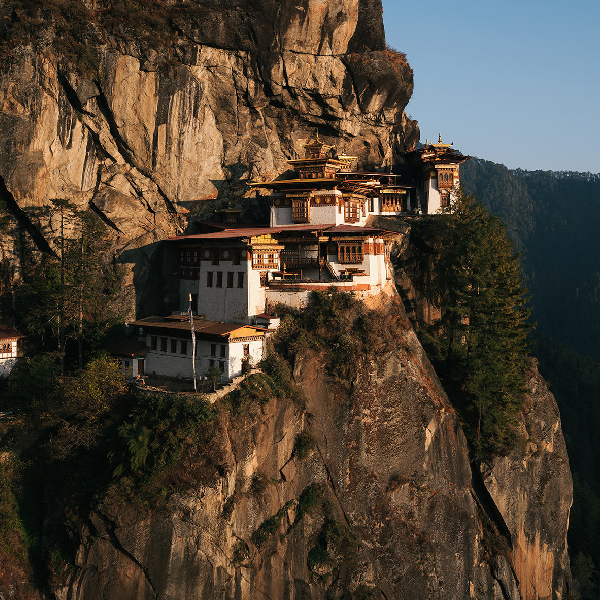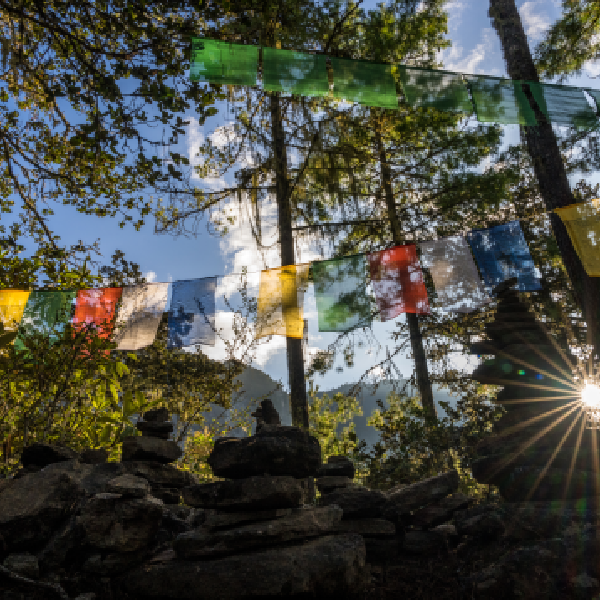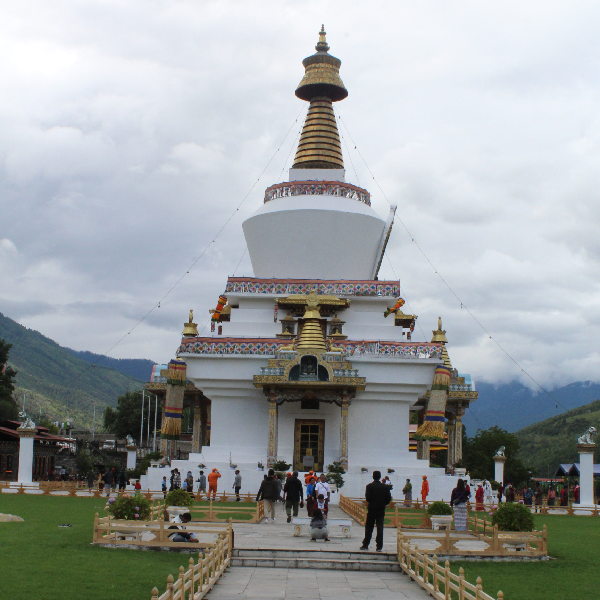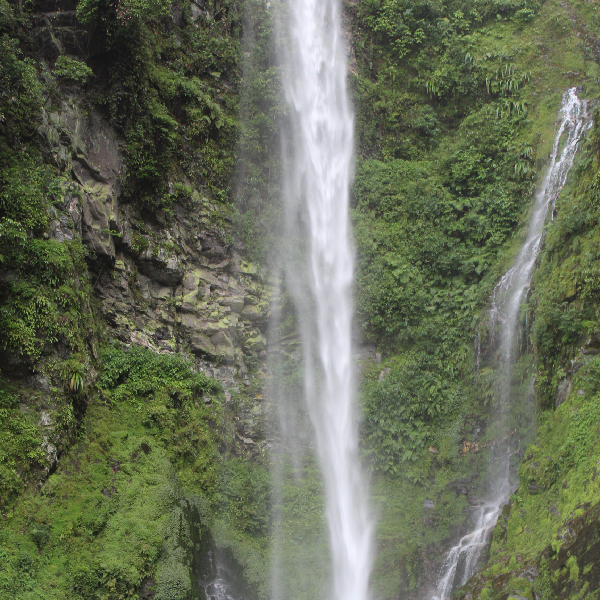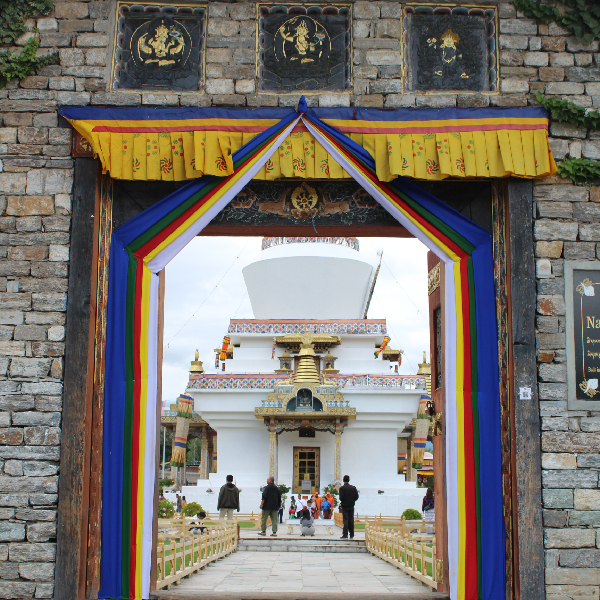The Ultimate Bhutan Odyssey: From Tiger’s Nest to Eastern Heritage
The Ultimate Bhutan Odyssey: From Tiger’s Nest to Eastern Heritage
Embark on a soul-stirring odyssey across Bhutan, beginning in the west with Paro, where the legendary Tiger’s Nest Monastery clings dramatically to a cliffside. Travel eastward to Thimphu, the bustling capital, where vibrant markets brim with traditional crafts and the city hums with a unique blend of tradition and modernity.
Continue to Punakha, where the majestic Punakha Dzong awaits at the confluence of two rivers, before entering the tranquil Phobjikha Valley in Gangtey, winter home to the revered black-necked cranes.
In Bumthang, immerse yourself in the spiritual heartland of Bhutan, exploring sacred monasteries, ancient temples, and artisanal textile traditions. The road leads you through Trongsa, where a colossal fortress overlooks sweeping mountain vistas, offering a glimpse into Bhutan’s royal history.
Continue your journey to Trashigang, a cultural treasure of eastern Bhutan, where vibrant traditions and warm hospitality abound. From there, explore Tashiyangtse, renowned for its exquisite woodwork and deep spiritual heritage. Finally, arrive at Samdrup Jongkhar, the southeastern gateway to Bhutan, where a unique blend of cultures shaped by its border location enriches the region’s diverse identity.
As your journey loops back, you’ll carry with you the essence of Bhutan—its breathtaking landscapes, timeless arts, and the deeply rooted way of life that makes this Himalayan kingdom truly extraordinary.
Short Itinerary
| Title | Accommodation | Meals |
| Day 1: Arrival at Paro/ Thimphu | Hotel | -/L/D |
| Day-2: Thimphu/Punakha | Hotel | B/L/D |
| Day-3: Punakha/Paro | Hotel | B/L/D |
| Day 4: Sightseeing in Paro | Hotel | B/L/D |
| Day-5: Paro/Departure | B |
Tour Program
Expand AllOn the first day of your adventure, you will arrive at Paro, home to Bhutan’s only international airport. After completing customs and immigration formalities, you’ll embark on a scenic drive to Thimphu, the nation’s vibrant capital. The journey covers about 65 kilometres and usually takes around 2 hours by car. Once in Thimphu, you will be escorted to your hotel to check in and refresh. After your travels, take some time to relax and unwind in the comfort of your hotel.
Hotel
-/L/D
After breakfast, begin your day exploring the vibrant capital city of Thimphu.
-
BBS Tower: Start with a visit to the BBS Tower, where you’ll enjoy panoramic views of the Thimphu Valley from a scenic vantage point—a perfect introduction to Bhutan’s natural beauty.
-
Motithang Mini Zoo: Next, visit the Motithang Mini Zoo, home to the Takin, Bhutan’s national animal—a fascinating creature that looks like a blend between a goat and a cow.
-
Anim Dratshang (Nunnery): Experience Bhutan’s spiritual heritage with a visit to Anim Dratshang, a Buddhist nunnery, and gain insight into the lives of Buddhist nuns.
-
National Library: Explore the National Library, which houses an extensive collection of ancient Buddhist manuscripts and texts, offering a deep dive into Bhutan’s literary and spiritual traditions.
-
School of Art and Craft: Visit the School of Art and Craft to witness Bhutanese artisans practicing traditional crafts, a testament to the country’s rich cultural heritage.
-
Zangthopelri Lhakang: Visit the Zangthopelri Lhakang, a serene temple located in the heart of Thimphu, renowned for its beautiful Bhutanese architectural style and intricate artwork.
-
Handicrafts Emporium: Conclude your Thimphu sightseeing with a stop at the Handicrafts Emporium, where you can shop for authentic Bhutanese textiles, handicrafts, and souvenirs.
After your day in Thimphu, enjoy a scenic drive to Punakha—a picturesque valley renowned for its stunning landscapes and historical significance as Bhutan’s former capital until 1955. Upon arrival, check in to your hotel and relax, soaking in the tranquility of the beautiful Punakha Valley.
Hotel
B/L/D
Your third day in Bhutan begins with deeper cultural exploration as you travel from Punakha to the picturesque Paro Valley. The day starts with a visit to the majestic Punakha Dzong (Pungtang Dechen Photrang Dzong), a stunning architectural masterpiece located at the confluence of the Pho Chhu and Mo Chhu rivers. This historic fortress holds immense spiritual importance and safeguards sacred relics, including the embalmed body of Zhabdrung Ngawang Namgyel, the unifier of Bhutan.
Following your visit, embark on a scenic drive to Paro, passing through peaceful valleys, traditional villages, and forested hillsides. Keep an eye out for yaks grazing in the meadows—an authentic glimpse into rural Bhutanese life.
Upon arrival in Paro, often considered one of Bhutan’s most beautiful valleys, you'll be welcomed by its lush landscapes, classic Bhutanese architecture, and the tranquil Paro River flowing through the heart of the valley. After checking in at your hotel, the remainder of the day is at leisure, allowing you to unwind or explore the serene surroundings at your own pace.
Hotel
B/L/D
After breakfast, begin your day with a visit to Drukgyel Dzong, a historic fortress nestled in the upper Paro Valley. Though now in ruins, this 17th-century structure once played a crucial role in defending Bhutan against Tibetan invasions and stands as a proud reminder of the nation's resilient past.
Next, prepare for an unforgettable hike to Taktsang Monastery, famously known as the Tiger’s Nest. Perched dramatically on a cliffside approximately 3,000 feet above the valley floor, this iconic site is one of Bhutan’s most revered spiritual landmarks. The trail offers stunning panoramic views and a profound sense of serenity, making the effort to reach the monastery both rewarding and spiritually uplifting.
In the afternoon, continue your cultural immersion with a visit to Paro Dzong (Rinpung Dzong), an architectural marvel that serves as a religious and administrative centre.
Just above the dzong, explore the National Museum of Bhutan, housed in an old watchtower known as Ta Dzong. The museum’s diverse collection includes ancient Thangka paintings, sacred relics, and historical artifacts that offer deeper insight into Bhutan’s rich heritage.
After a full day of discovery, return to your hotel in Paro to relax and reflect on the remarkable sites and stories you've experienced.
Hotel
B/L/D
On the fifth day after breakfast, we will transfer you to Paro Airport for your onward journey.
B
Tour Includes
- Arrival/Departure transfers.
- Meet and assist at the airport by our representative.
- 02-night hotel accommodation in Paro on a double sharing on a full board basis.
- 01-night hotel accommodation in Thimpu on a double sharing basis on a full board basis.
- 01-night hotel accommodation in Punakha on a double sharing basis on a full board basis.
- All the sightseeing tours and transfers as per the itinerary with an English-speaking local guide in Bhutan
- Bhutan Visa fee
- Tourism development fee & Entrance fee in Bhutan
- All administrative costs
- Full service & assistance before, during, and after your Bhutan trip.
Tour Excludes
- Airfare (we can arrange your tickets for you if you wish)
- Any other beverages (alcoholic or non-alcoholic) including water ordered in restaurants and hotels
- Travel or health insurance
- Wire transfer
- Laundry
- Gratuity/Tip for guides and drivers
FAQ
Expand AllØ The tour lasts for 4 nights and 5 days.
Ø The tour package typically includes accommodation, transportation, meals, sightseeing tours, and the services of a guide.
Ø Some of the must-visit attractions include Paro Taktsang (Tiger’s Nest Monastery), Punakha Dzong, Dochula Pass, Thimphu Memorial Chorten, and Buddha Dordenma.
Ø The best time to visit Bhutan for this tour is during the spring (March to May) and autumn (September to November) seasons when the weather is pleasant and the skies are clear.
Ø Yes, travellers to Bhutan require a visa. However, the visa process is usually handled by the tour operator, and you need to provide certain documents for the visa application.
Ø While some walking and hiking may be involved, the tour is generally not very physically demanding. However, it's recommended to have a reasonable level of fitness to enjoy the tour fully.
Ø Accommodation options range from budget to luxury hotels, depending on the tour package you choose.
Ø Bhutanese cuisine is largely influenced by Tibetan and Indian flavours. Some popular dishes include Ema Datshi (chilli and cheese stew), Phaksha Paa (pork cooked with spicy red chillies), and Momos (dumplings).
Ø Yes, Bhutan is considered a safe country for tourists. However, like any other destination, it's advisable to take normal precautions and respect local customs and traditions.
Ø The official currency of Bhutan is the Bhutanese Ngultrum (BTN). Indian Rupee (INR) is also widely accepted in Bhutan.
Ø It's recommended to pack comfortable clothing, sturdy walking shoes, sunscreen, a hat, sunglasses, and a light jacket for cooler evenings.
Ø Yes, it's important to respect Bhutanese customs and traditions. Dress modestly, remove your shoes before entering religious sites, and ask for permission before taking photographs of people.
Ø Yes, it's possible to extend your stay in Bhutan. You can discuss the options with your tour operator.
Ø Wi-Fi and mobile connectivity may be available in hotels and urban areas, but it may be limited or unavailable in remote regions.
Ø Some tour operators may offer customizable itineraries based on your preferences. However, it's advisable to discuss this with your tour operator before booking.
Things to know
1. Visa & Travel Permits
- All travellers (except Indian, Bangladeshi, and Maldivian nationals) require a visa.
- Visas are processed only through registered Bhutanese tour operators.
- A daily Sustainable Development Fee (SDF) is applicable (currently USD 100 per day for most travellers).
2. Entry Points
- The main international entry is via Paro International Airport.
- Overland entries are possible from India (Phuentsholing, Samdrup Jongkhar, Gelephu).
3. Best Time to Visit
- March–May (Spring) and September–November (Autumn) offer the best weather and festival experiences.
- June–August is monsoon season; December–February is cold but clear.
4. Dress Code & Etiquette
- Dress modestly, especially when visiting temples and dzongs.
- Remove shoes before entering religious sites.
- Show respect to monks and avoid pointing feet at sacred objects.
5. Accommodation & Transport
- Tours include 3-star hotel stays by default (luxury upgrades available).
- A private vehicle with a guide and driver is standard for all tours.
6. Internet & Connectivity
- Wi-Fi is available in most hotels, though speed may vary.
- Local SIM cards (TashiCell or B-Mobile) are available for purchase.
7. Currency & Payments
- Bhutanese Ngultrum (BTN) is used; Indian Rupees (INR) are also widely accepted.
- Credit cards are accepted in some places, but cash is preferred in rural areas.
8. Language
- Official language: Dzongkha
- English is widely spoken by guides and in urban areas.
9. Food
- Expect rice-based meals with vegetables and local curries.
- Don’t miss Bhutan’s national dish: Ema Datshi (chilli & cheese).
10. Altitude & Health
- Most introductory tours stay under 3,000 meters, so altitude sickness is rare.
- Carry basic medications and travel insurance covering high altitude and medical evacuation.
Why Book With Us?
- Expert Knowledge
- Customized Itineraries
- Immersive Experiences
- Seamless Travel
- Safety and Comfort
- Cultural Sensitivity
- Flexible Options
- Best Tour Guides
- Unmatched Hospitality
- Personalized Support
- Sustainable Tourism
- Local Partnerships

